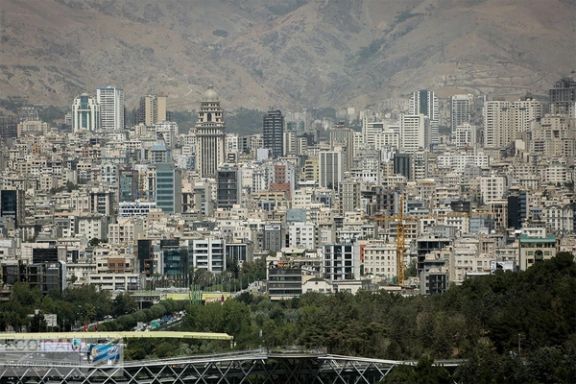Iran’s Statistics Center Reports Housing Inflation After Months Of Silence

Amid the Iran-funded Hamas war with Israel, Iran’s Statistics Center has finally released a report on housing inflation after eight months of withholding data.

Amid the Iran-funded Hamas war with Israel, Iran’s Statistics Center has finally released a report on housing inflation after eight months of withholding data.
According to the center, housing prices in Tehran have risen 84 percent since last year, a figure so big that it may be the reason behind the government’s reluctance to publish the data. The data blackout deteriorated the already murky situation of the capital’s housing market.
The newly released data indicate that the average price per square meter of housing in Tehran has increased 20-fold in the past eight years. In 2015, the average price was about 40 million rials, and now it is about 800 million rials (about $1,600 in today’s exchange rate). Back in 2015, the dollar was traded at about 30,000 rials, meaning that the average price per square meter was about $1,200.
Buying property for Iranian wage-earners has become virtually impossible with an average monthly salary of about $200. The rents have also increased across Iran so drastically that currently more than half of a household's income will be spent on rent. In Tehran, the proportion is even more alarming, with workers spending an astounding 100 percent of their wages on housing expenses. The minimum wage for a married worker with all benefits hovers just above $180 per month, while the minimum cost of food for an average three-person household is at least $140 to $160.
Iran’s leading economic newspaper Donyaye Eghtesad (World of Economy) reported Sunday that considering the inflation rate and the government's failure to actualize its announced economic plans, the country’s budget deficit will further increase this year, as is the case in Iran every fiscal year. The daily added that in the previous year, the government covered part of the budget deficit by borrowing from banks, raising government's debts to the banks by 150 percent.
Whenever the government seeks loans from banks, it pushes the Central Bank of Iran to print more money to supply the funds. As a result of the increasing money supply, the rial has fallen 12-fold in the past five years and has halved in value in the past one year. It is now trading around 500,000 to one US dollar.
Abdolnasser Hemmati, the former governor of Iran's central bank who is among the most outspoken critics of the current administration, said Sunday that macroeconomic indicators prove that the country’s economic woes stem from a lack of proper governance and financial policies over the past three decades.
Bemoaning the country’s meager annual growth rate, the chief banker under former president Hassan Rouhani said "investment and efficiency" are among the main influential factors in economic growth. He claimed that ‘efficiency’ is a term only used on paper in government’s five-year development plans that never materializes.
Additionally, Bahram Shakouri, a member of Iran’s Chamber of Commerce, also criticized the administration of President Ebrahim Raisi for its policies regarding attracting investment. He stated, “When domestic investors are disappointed, how can we expect foreign capital owners to be willing to invest in the country?" adding that there is no investment security in Iran until the country improves its relations with the international community and connects its banking system to the world.
Earlier in the month, the deputy chief of the Central Bank of Iran, Mohamamd Shirijian, claimed that Iran's GDP grew by 4% in 2022, and the growth rate in Q1 and Q2 of 2023 increased 5.3 and 6.2 percent, respectively. The claims seem to contradict a report by reformist daily Ham-Mihan also in October that forecast a budget deficit twice as big as the figure in the previous year. The paper said if the country’s revenues in the second half of the Iranian year (which ends in March 2024) mirror the trend in the first six months, the budget deficit would significantly worsen in comparison with last year.
It is very difficult to judge the veracity of the Central Bank's optimistic claim, given the lack of any positive movement in Iran's currency markets or the nearly 50-percent annual inflation rate. The current government dominated by hardliners is notorious for making outlandish claims of economic success.
Against the backdrop of all its economic hardships, the regime has been spending heavily on the development of its drone and missile technology and gives hundreds of millions of dollars per yet to its proxy militia groups, such as Hamas that has rained thousands of rockets on Israel since its multi-thronged operation earlier this month in spite of its people in Gaza unable to eat and drink.
Economist Parviz Jahed said Saturday that 45 million of Iran’s 88 million population live in poverty, another reason that justifies Iranians to chant "Neither Gaza nor Lebanon, I sacrifice my life for Iran" during their anti-government protests, showing the frustration with the regime’s allocation of resources.